CAA News Today
CWA Picks: Summer 2023
posted by CAA — May 31, 2023
CAA’s Committee on Women in the Arts (CWA) curates a seasonal list of must-see exhibitions. The CWA Summer 2023 picks highlight the rich contributions of women-identifying African, Latinx, and Indigenous artists, bringing their voices to the forefront. These artists explore the legacies of their respective mediums and their enduring significance in contemporary art. Unafraid to tackle pressing social issues, their works offer a powerful lens through which to examine themes of gender, sexuality, race, and ethnicity. By amplifying marginalized perspectives, these exhibitions provoke meaningful conversations and challenge existing narratives in the art world.
Tender Loving Care
July 22, 2023–July 28, 2025
Museum of Fine Art, Boston
This exhibition explores the theme of care through contemporary art. The act of creating and appreciating art is a form of care, and the exhibition highlights how artists address this concept through their materials, ideas, and processes. The exhibition showcases around 100 works from the museum’s collection, organized into five thematic groupings: threads, thresholds, rest, vibrant matter, and adoration. Examples of care in art can be seen in Gisela Charfauros McDaniel’s portrait of her mother, Nick Cave’s Sound Suit, and textiles and fiber art by Sheila Hicks, Howardena Pindell, and Jane Sauer. Through these works and others, visitors are invited to consider how care can inspire new models for living and feeling in the present and the future.
Creativity in the Time of COVID-19: Art as a Tool for Combatting Inequity and Injustice
August 25–September 30, 2023
Buffalo NY: Squeaky Wheel, Buffalo Arts Studio + Buffalo Game Space
In collaboration with the Andrew W. Mellon Foundation, Michigan State University, and SUNY Buffalo’s Amatryx Lab & Studio, this exhibition features a range of BIPOC, LGBTQ+, and Buffalo-based artists and creatives to center marginalized experiences of the pandemic and social justice concerns.
Black Venus
Through August 20, 2023
Museum of the African Diaspora, San Francisco
BLACK VENUS, curated by Aindrea Emelife is an exhibition that surveys the legacy of Black Women in visual culture – from fetishized, colonial-era caricatures to the present-day reclamation of the rich complexity of Black womanhood by 18 artists (of numerous nationalities and with birth years spanning 1942 to 1997). This exhibition is a celebration of Black beauty, an investigation into the many faces of Black femininity and the shaping of Black women in the public consciousness – then and now.
In BLACK VENUS, archival depictions of Baartman and other historical Black women pair with the vibrant, narrative portraiture by some of today’s most influential Black image-makers whose work deals with layered narratives of Black femininity.
This exhibition reckons with difficult visual histories. It features some themes and images that are derogatory and many that are empowering. Sensitive visitors should be aware that several artists in the exhibition employ nudity and sexual imagery to explore their ideas.
Amalia Mesa-Bains: Archeology of Memory
Through August 13, 2023
UC Berkeley Art Museum and Pacific Film Archive (BAMPFA), Berkeley
Amalia Mesa-Bains: Archaeology of Memory is the first retrospective exhibition of the work of longtime Bay Area artist Mesa-Bains. Presenting work from the entirety of her career for the first time, this exhibition, which features nearly 60 works in a range of media, including fourteen major installations, celebrates Mesa-Bains’s important contributions to the field of contemporary art locally and globally.
Shaped by the Loom: Weaving Worlds in the American Southwest
Through July 9, 2023
Bard Graduate Center, NYC
Shaped by the Loom: Weaving Worlds in the American Southwest invites you to explore the world of Navajo weaving. This dynamic gallery and online experience presents never-before-seen textiles created by Diné artists. These historic blankets, garments, and rugs from the American Museum of Natural History are situated alongside contemporary works by Diné weavers and visual artists, such as Barbara Teller Ornelas and Lynda Teller Pete. Shaped by the Loom highlights seasonal cycles that guide the harvesting of dye plants, the cosmologies that inform a weaver’s work, and the songs, stories, and prayers that are woven into every piece. The items in the exhibition will be accompanied by artist interviews, interactive storytelling, and stunning panoramic views of the Navajo Nation. Shaped by the Loom elevates the voices of Indigenous artists and makers to express the cultural legacy and continued vibrancy of weaving traditions in the American Southwest.
The Figure, Reclaimed
A Renaissance of the female body in visual culture
July 5–August 4, 2023
Carolla Arts Exhibition Center, Missouri State University
Throughout the history of visual culture, figurative painting has been regarded as one of the highest forms of Western art. Dazzling displays of hyper-realistic anatomical mastery and expansive narrative scenes depicting multiple figures through complex perspectives dominated as the pinnacle of art-making for centuries. While the artists of these historic images were all white male painters, it was the female body that was often leveraged for these narratives. Further, female artists were also excluded from painting these historic scenes and denied access to nude models to even attempt to study the art of figural painting.
The Figure, Reclaimed, seeks to celebrate and explore the Renaissance of the female body and the female figurative painter in visual culture. Through the work of Aneka Ingold and Livia Xandersmith, this exhibition explores how female figurative painters have combined the traditional art of figurative painting with contemporary, stylized approaches to redefine and expand upon what it means to be a figurative painter, ruminate on the female experience, and how representations of the female body are consumed.
As women face losing bodily autonomy in today’s contemporary society, what does it mean to be a female figurative painter in today’s context? What stories must be told on the scale of figurative painting about what it means to identify as a woman today? Why is the female body a contested landscape, and why does this form hold a sense of home base for visual culture? Is it the embodied connection to humanity and life?
Madeleine Hunt-Ehrlich: Too Bright to See
Perez Art Museum, Miami
Through January 7, 2024
Madeleine Hunt-Ehrlich (b. 1987) is a filmmaker and artist whose work blends narrative and documentary traditions to explore stories and experiences of Black women in the Americas.
Hunt-Ehrlich’s experimental narrative artwork Too Bright to See (Part I) draws on her extensive research on the legacy of Suzanne Roussi-Césaire, a writer and anticolonial and feminist activist from Martinique who, along with her husband, Aimé Césaire, was at the forefront of the Négritude movement during the first half of the 20th century. Roussi-Césaire would also become an important Surrealist thinker, influencing the likes of painter Wifredo Lam and writer André Breton. However, despite her critical contributions to Caribbean thought and Surrealist discourse, until recently much of her work was overlooked.
Too Bright to See (Part I) weaves archival materials with cinematic narrative scenes filmed with an unconventional and modern cast. Drawing inspiration from Caribbean aesthetics and Surrealist artwork, this film installation brings attention to new aspects of Roussi-Césaire’s legacy that are undocumented in the public arena, while addressing the broader question of the continued erasure of women from historical accounts.
Carrie Mae Weems: Reflections for Now
Barbican Art Gallery, London
June 21–September 3, 2023
Opening 22 June 2023, Barbican Art Gallery is proud to present the first major solo exhibition of Carrie Mae Weems in a UK institution. Widely considered to be one of the most influential American artists working today, Weems (b.1953) is celebrated for her exploration of cultural identity, power structures, desire, and social justice through a body of work that develops questioning narratives around race, gender, history, class and their systems of representation.
Highlighting her remarkably diverse and radical practice, this survey brings together an outstanding selection of photographic series, films, and installations spanning over three decades, many of which have never been seen before in the UK. Presenting the development of her unique poetic gaze and formal language from the early 1990s to the present day, this exhibition reflects on Weems’s pioneering career. On display are works from her early iconic Kitchen Table Series (1990) which explores how power dynamics are articulated in the domestic sphere and the potential of the home as a space for resistance, to her acclaimed series Roaming (2006) and Museums (2016) where Weems’s muse confronts architecture as the materialisation of political and cultural power. Her oeuvre challenges dominant ideologies and historical narratives created by and disseminated within science, architecture, photography, and mass media.
The exhibition is accompanied by Carrie Mae Weems: Reflections for Now, the first publication devoted to the artist’s writings. It will highlight Weems’s influence as an intellectual, reflecting the dual nature of her career as an artist and activist. A public programme of events, including a programme of films in Barbican cinema, will also run throughout the course of the exhibition.
Gio Swaby: Fresh Up
Through July 3, 2023
Art Institute of Chicago
Gio Swaby is a multidisciplinary artist whose textile-based practice explores the intersections of Blackness and womanhood. Her embroidered portraits are anchored in the connections she forges with her subjects: each portrait begins with a photo shoot in which her sitters are captured in a moment of self-awareness and empowerment. In her textile interpretations, Swaby foregrounds their hair, clothing, and jewelry—highlighting and celebrating the subjects’ use of fashion as unapologetic self-definition and self-expression.
This exhibition—Swaby’s first solo museum show—brings together seven of Swaby’s series from 2017 through 2021, such as My Hands Are Clean, Love Letters, and Pretty Pretty, along with approximately 15 new works, including her largest work to date, a commission for the US Embassy in Nassau, Bahamas. The title of the show, Fresh Up, developed with the artist, is a Bahamian phrase often used as a way to compliment someone’s style or confident way of being. Swaby has remarked, “It holds a lot of positivity and joy. It also speaks to the tone of confidence and power that I want to create with these works. I love that it is a way to form connections through a simple phrase.”
Lynn Hershman Leeson: Phantom Limb
Through July 8, 2023
Altman Seigel, San Francisco
Altman Siegel proudly presents a historical exhibition of works from Lynn Hershman Leeson’s Phantom Limb series, which was created in the 1980s. At the time that it was created, the Phantom Limb collages illustrated the more insidious impacts of mass media and technology on women’s bodies. Created prior to the advent of Photoshop, this body of work borrows from the visual language of advertising, fusing female forms with technology. Seductively posed women merge with cameras, TV screens, and electrical plugs, pointing to ways in which gendered mass media representations shape and distort women’s self-image. At once alluring and disarming, these black-and-white photo collages grapple with the absorption of female identity into modern media at a time when the depths of this issue were just beginning to be explored.
In this series Hershman Leeson was already musing on the implications of surveillance when she describes cameras as a “capture system”:
“This photographic series…suggests that we are not only being watched by surveillance systems, but that ‘capture’ systems are endemic to our society. The series questions individual complicity in a system that simultaneously steals images and warps personal identity. The seductive alliance of surveillance and capture inspired the sexually provocative positions in the anthropomorphic images.” – Lynn Hershman Leeson
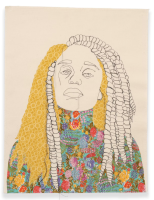
My Hands Are Clean 4, 2017 Gio Swaby. Courtesy of Claire Oliver and Ian Rubinstein. © Gio Swaby
caa.reviews Seeks Field Editors in Ten Areas
posted by CAA — May 16, 2023
CAA is inviting nominations and self-nominations for individuals to join the caa.reviews Council of Field Editors for the three-year term July 1, 2023–June 30, 2026. caa.reviews is devoted to the peer review of new books, museum exhibitions, and projects relevant to art history, visual studies, and the arts. Candidates may be artists, art historians, art critics, art educators, curators, or other art professionals with stature in the field and experience writing or editing books and/or exhibition reviews; institutional affiliation is not required. caa.reviews is seeking Field Editors in the following fields:
- Architectural History, Urban Planning, Historic Preservation, Landscape Architecture
- South and Southeast Asian Art
- Indigenous Art
- Early Modern European Art (South)
- Nineteenth-Century Art
- Twentieth-Century Art
- Contemporary Art
- Cinema, Media, and Performance
- Exhibitions: Northeast
- Exhibitions: New York
Working with the caa.reviews editor-in-chief, the caa.reviews Editorial Board, and CAA’s staff editor, each field editor selects content to be reviewed, commissions reviewers, and considers manuscripts for publication. Field editors for books are expected to keep abreast of newly published and important books and related media in their fields of expertise, and those for exhibitions should be aware of current and upcoming exhibitions (and other related projects) in their geographic regions.
The Council of Field Editors meets once a year in February during the Annual Conference (although attendance at the conference is not necessary to participate in the meeting). Members of all CAA committees and editorial boards volunteer their services without compensation.
Candidates must be current CAA members and should not be serving on the editorial board of a competing journal or on another CAA editorial board or committee. Nominators should ascertain their nominee’s willingness to serve before submitting a name; self-nominations are also welcome.
Interested applicants—both self-nominated or nominated by someone else—should submit a CV and a cover letter in a single PDF document to ebell@collegeart.org.
Deadline: June 15, 2023
Nominations Open for CAA Juries
posted by CAA — May 11, 2023
CAA invites nominations and self-nominations for individuals to serve on our Awards for Distinction, Publication Grant, Fellowship, and Travel and Support Grant juries. Terms begin July 2023.
Candidates must possess expertise appropriate to the jury’s work and be current CAA members. They should not hold a position on a CAA committee or editorial board beyond May 31, 2023. CAA’s president and vice president for committees appoint jury members for service. Materials are due to CAA by June 1, 2023.
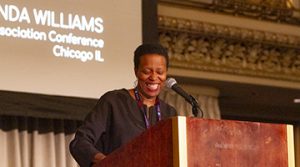
Amanda Williams speaks at Convocation at CAA’s 108th Annual Conference in Chicago
AWARDS FOR DISTINCTION JURIES
CAA has vacancies in the following juries for the annual Awards for Distinction for three years (2023–2026). Terms begin in July 2023.
- Art Journal Award (1 vacancy)
- The Alfred H. Barr Jr. Award/Alfred H. Barr Jr. Award for Smaller Museums, Libraries, Collections, and Exhibitions for museum scholarship (2 vacancies)
- Charles Rufus Morey Book Award for non-catalogue books in the history of art (1 vacancy)
- Frank Jewett Mather Award for art criticism (2 vacancies)
- Arthur Kingsley Porter Prize for Art Bulletin articles (1 vacancy)
- The CAA/American Institute for Conservation Award for Distinction in Scholarship and Conservation (1 vacancy)
- Jury for the Artist Award for Distinguished Body of Work, Distinguished Artist Award for Lifetime Achievement, and Distinguished Teaching of Art Award (1 vacancy)
- Excellence in Diversity Award (3 vacancies)
- Distinguished Feminist Awards for Scholars and Artists (1 vacancy)
FELLOWSHIP AND SCHOLARSHIP JURIES
CAA has vacancies on our Professional Development Fellowship juries for three years (2023–2026). Terms begin in July 2023.
- Professional Development Fellowships for Art History (2 vacancies)
- Professional Development Fellowships for Visual Art, CAA-GOLDEN Scholarship Program, and Michael Aurbach Fellowship for Excellence in Visual Art (3 vacancies)
TRAVEL/SUPPORT GRANT JURIES
CAA has vacancies on our jury for three years (2023–2026). Terms begin in July 2023.
- Art History Fund for Travel to Special Exhibitions (3 vacancies)
HOW TO APPLY
Nominations and self-nominations should include a brief statement (no more than 150 words) outlining the individual’s qualifications and experience and a CV (an abbreviated CV no more than two pages may be submitted). Please send all materials by email to Cali Buckley: cbuckley@collegeart.org. Nominations must be sent as a Microsoft Word or Adobe PDF attachment.
For questions about jury service and responsibilities, contact cbuckley@collegeart.org.
Deadline: June 1, 2023
Art Journal Seeks Editor-in-Chief
posted by CAA — Mar 21, 2023
**THESE POSITIONS HAVE BEEN FILLED. NOMINATIONS ARE CLOSED**
The Art Journal/AJO Editorial Board invites nominations and self-nominations for the position of editor-in-chief for the term July 1, 2023–June 30, 2027 (with service on the Art Journal/AJO Editorial Board in 2023–24 as editor designate, and in 2027–28 as past editor). Art Journal, published quarterly by CAA, is devoted to twentieth- and twenty-first-century art and visual culture.
Working with the editorial board, the editor-in-chief (EIC) is responsible for the content and character of the journal. The EIC solicits content, reads all submitted manuscripts, sends submissions to peer reviewers, and provides guidance to authors concerning the form and content of submissions; develops projects; makes final decisions regarding content; and may support fundraising efforts on the journal’s behalf. A candidate may be an artist, art historian, art critic, art educator, curator, or other art professional. The EIC works closely with CAA’s New York staff, attends three meetings each year of the Art Journal/AJO Editorial Board—held in the spring and fall by teleconference or in New York, and in February at the CAA Annual Conference—and submits an annual report to CAA’s Board of Directors.
The position usually requires twenty hours a week. CAA provides financial compensation for course releases, usually to the EIC’s employer. The EIC is responsible for expenses related to travel and lodging.
Candidates must be current CAA members in good standing and should not be serving on the editorial board of a competitive journal or on another CAA editorial board or committee. CAA encourages applications from colleagues who will contribute to the diversity of perspectives on the Art Journal/AJO Editorial Board and who will engage actively with conversations about the discipline’s engagements with differences of culture, religion, nationality, race, gender, sexuality, and access. Nominators should ascertain their nominee’s willingness to serve before submitting a name; self-nominations are also welcome. A CV, a letter of interest from the nominee, and at least one letter of recommendation must accompany each nomination. Please send nominations by email to Eugenia Bell, Editorial Director, ebell@collegeart.org, and include “Art Journal Editor-in-Chief Search” in the subject line.
Deadline: April 30, 2023
caa.reviews Seeks Field Editors in Eleven Areas
posted by CAA — Mar 21, 2023
CAA is inviting nominations and self-nominations for individuals to join the caa.reviews Council of Field Editors for the three-year term July 1, 2023–June 30, 2026. An online journal, caa.reviews is devoted to the peer review of new books, museum exhibitions, and projects relevant to art history, visual studies, and the arts. Candidates may be artists, art historians, art critics, art educators, curators, or other art professionals with stature in the field and experience writing or editing books and/or exhibition reviews; institutional affiliation is not required.
-
-
- Indigenous Art
- Architectural History, Urban Planning, Historic Preservation, Landscape Architecture
- South and Southeast Asian Art
- Islamic Art
- Cinema, Media, and Performance
- Nineteenth-Century Art
- Twentieth-Century Art
- Contemporary Art
- Early Modern European Art (South)
- Exhibitions: Midwest
- Exhibitions: Northeast
-
Working with the caa.reviews editor-in-chief, the caa.reviews Editorial Board, and CAA’s staff editor, each field editor selects content to be reviewed, commissions reviewers, and considers manuscripts for publication. Field editors for books are expected to keep abreast of newly published and important books and related media in their fields of expertise, and those for exhibitions should be aware of current and upcoming exhibitions (and other related projects) in their geographic regions.
The Council of Field Editors meets once a year at the CAA Annual Conference. Members of all CAA committees and editorial boards volunteer their services without compensation.
Candidates must be current CAA members and should not be serving on the editorial board of a competing journal or on another CAA editorial board or committee. Nominators should ascertain their nominee’s willingness to serve before submitting a name; self-nominations are also welcome.
Interested applicants—both self-nominated or nominated by someone else—should submit a CV and a cover letter, in one PDF document to ebell@collegeart.org.
Deadline: April 30, 2023
CAA Staff Spotlight: Mira Friedlaender
posted by CAA — Mar 10, 2023
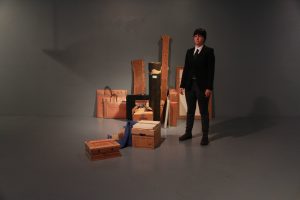
On Guard, performance centering on the installation of long-stored objects from the Bilge Civelekoglu Friedlaender Estate, FiveMyles, Brooklyn, 2014.
Mira Friedlaender is CAA’s Senior Manager of Annual Conference and Programs. Since joining CAA in 2018, Mira has worked with a significant portion of members (new and returning!) and continues to do so each year to support their participation in conference sessions and events. She produces the event with CAA staff, committees, and partners, attending to myriad details while also working to refine and reshape the conference each year in support of CAA’s long-term strategic goals. Mira was previously an exhibition manager for nonprofits such as No Longer Empty and HappyLuckyNo1. She also worked in television production and co-owned a restaurant in Brooklyn, New York.
As an artist and independent scholar of art stewardship, Mira has exhibited locally and internationally, and her work has been featured in the New York Times and Bomb. She has held residencies at the American Center in Bangladesh and Recess in New York. She is the Director of the Bilge Friedlaender Estate, was a fellow in the Art & Law Program, and cocurated Bilge Friedlaender: Words, Numbers, Lines in Istanbul.
“Since her death, I’ve been stewarding the art my mother Bilge Friedlaender (née Civelekoglu) made, beginning more actively in 2014 with my project at Recess, which was still in Soho at that time. I’ve contributed to the scholarship on artist estates through this work and through knowledge sharing; as an artist and artist’s heir I am most interested in performing an emotional institutional critique of the challenges artist-stewards face, particularly those without infinite resources,” explains Mira.
Curated by Işın Önol, Bilge Friedlaender’s never-before-seen works from the 1970s are on view now at Sapar Contemporary in New York City through April 10. Bilge’s work occupies a unique place in the Turkish and Middle Eastern modernist tradition as well as in the history of twentieth-century American art, especially the soulful minimalism of 1970s—not unlike the work of Zarina Hashmi, Etel Adnan, and Huguette Caland. Bilgé’s minimalism is infused with Sufi mysticism, sacred numerology, and reverence for nature and the divine feminine. Her spiritual feminism evolved into an overt ecofeminism as she grew older.
“My mother left Turkey in 1958 to come to the US and be an artist, and she exhibited until her death. Since 2015 there has been a museum show of her work in Istanbul and there have been subsequent opportunities for Bilge’s work, but this is the first time her work has been shown in New York City since 1981. This is a big step for the estate. Next, we are looking to travel this incredible selection of the works on paper and artist books with the goal of expanding the scholarship around Bilge’s artworks and extensive writings.”
Join Mira and curator Işın Önol in conversation with guests on April 4, 6 p.m. ET, at Sapar Contemporary.
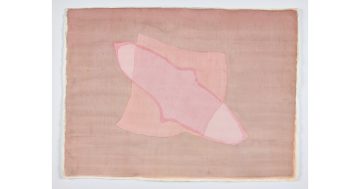
Bilge Friedlaender, Weightless Pink, 1975
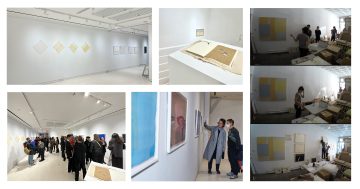
Bilgé: Lifespan of a Horizontal Line, Sapar Contemporary, 2023, and, right column, Half of What’s There, Recess Art, 2014
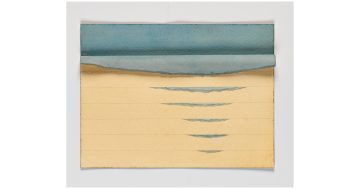
Bilge Friedlaender, Tides Time II, 1975
CAA Signs ACLS Statement on Florida House Bill 999
posted by CAA — Mar 07, 2023
CAA has signed on to a statement issued by the American Council of Learned Societies (ACLS) regarding Florida HB 999. This bill would radically shift Florida’s approach to higher education in a manner that negatively impacts diversity and academic freedom; this is antithetical to CAA’s mission.
CAA stands with ACLS, together with other academic societies, and shares their belief that, if passed, the bill “ends academic freedom in the state’s public colleges and universities, with dire consequences for their teaching, research, and financial well-being.”
The full ACLS statement on Florida HB 999 can be viewed here. CAA encourages individual and institutional members to visit the ACLS website and sign on to the ACLS statement, as well as contact legislators, write op-eds, and proliferate information on social media to fight this bill.
Other learned societies and higher education institutions who have signed the ACLS statement:
American Academy of Religion
American Anthropological Association
American Association for Italian Studies
American Folklore Society
American Historical Association
American Musicological Society
American Philosophical Association
American Political Science Association
American Society for Environmental History
American Sociological Association
Association for Slavic, East European, and Eurasian Studies
Association for the Study of African American Life and History
Association of University Presses
College Art Association
German Studies Association
Latin American Studies Association
Linguistic Society of America
Medieval Academy of America
Modern Language Association
National Council of Teachers of English
National Council on Public History
National Women’s Studies Association
Organization of American Historians
Rhetoric Society of America
Sixteenth Century Society & Conference
Society for Ethnomusicology
Society for Music Theory
Society for the History of Technology
Society of Biblical Literature
World History Association
CAA has also signed on to a Florida HB 999 statement issued by the American Historical Association (AHA) which can be viewed here.
Other organizations who have signed the AHA statement:
African American Intellectual History Society
American Anthropological Association
American Association for the History of Medicine
American Association of University Professors
American Folklore Society
American Philosophical Association
American Society for Environmental History
American Sociological Association
Association for Slavic, East European, and Eurasian Studies
Association for the Study of African American Life and History
Association of Ancient Historians
Association of University Presses
Berkshire Conference of Women Historians
Black Heritage Trail of New Hampshire
Central European History Society
College Art Association
Committee on LGBT History
Conference on Latin American History
Executive Committee of the Czechoslovak Studies Association
French Colonial Historical Society
German Studies Association
H-France
Historians for Peace and Democracy
Immigration and Ethnic History Society
Kurt Vonnegut Museum and Library
Labor and Working Class History Association
LGBTQ History Museum of Central Florida
Linguistic Society of America
Medieval Academy of America
National Association of Diversity Officers in Higher Education
National Council on Public History
National Council of Teachers of English
New England Historical Association
North American Conference on British Studies
North American Society for Oceanic History
Organization of American Historians
PEN America
Polish American Historical Association
Radical History Review
Roy Rosenzweig Center for History and New Media
Shakespeare Association of America
Social Welfare History Group
Society for Austrian and Habsburg History
Society for French Historical Studies
Society for Historians of the Gilded Age and Progressive Era
Society for Textual Scholarship
Society for the History of the Early American Republic
Society for the History of Technology
Society for the History of the Early American Republic
Society for U.S. Intellectual History
Southern Historical Association
Texas Institute of Letters
Tully Center for Free Speech at Syracuse University
Western Society for French History
Woodhull Freedom Foundation
World History Association
Meet the Michael Aurbach Fellowship for Excellence in Visual Art Inaugural Recipient and Honorable Mentions
posted by CAA — Mar 07, 2023
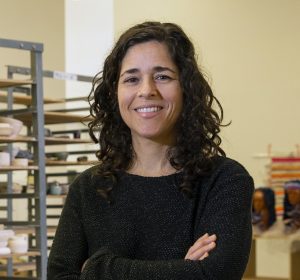
CAA is pleased to announce the first ever recipient of the first Michael Aurbach Fellowship for Excellence in Visual Art: Lauren Sandler.
Lauren Sandler is a ceramic artist and educator whose work deconstructs mythologies and investigates narratives of power and perspective. Sandler exhibits nationally, and gives talks, workshops, and publishes work concerning contemporary and historic issues in ceramics. She holds an MFA in Ceramics from Penn State University, and undergraduate degrees in Anthropology and Ceramics from Ithaca College and SUNY New Paltz. She served on the Board of the National Council on Education for the Ceramic Arts as Director at Large from 2019–22 and is currently Associate Professor and Program Head of Ceramics at Tyler School of Art and Architecture at Temple University.
HONORABLE MENTIONS
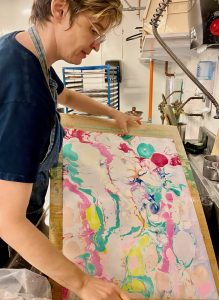
Ellen Wetmore, University of Massachusetts Lowell
Ellen Wetmore is a Professor of Art and Chair of the Department of Art and Design at the University of Massachusetts, Lowell. She is a graduate of the University of Michigan (BFA, BA in Art History) and Tufts University/School of the Museum of Fine Arts (MFA), and joined UMass Lowell in 2007. She is a participant of CAA, UFVA, Cultivamos Cultura, and past member of the Boston Sculptors Gallery. Her awards include a 2017 Berkshire Taconic ART Fellowship and a 2017 Massachusetts Cultural Council Fellowship. Her social concerns include neuro-atypical disabilities, race and teaching, money and art. Wetmore’s current artistic practice reinterprets history, art history, and investigates visual thinking. Wetmore’s projects have been featured at the Boston Cyberarts Art on the Marquee, the Indianapolis Art Center, the Sandwell Arts Trust, Ciné Lumière, London, CologneOff, Germany, the InShadow Festival, Lisbon, and Videoholica in Bulgaria. She is a 2012 School of the Museum of Fine Arts Traveling Fellow and a summer 2015 visiting artist at the American Academy of Rome. Her most recent solo exhibition was a drawing study of the collection at the Fitchburg Art Museum. Her current science collaborations explore printed, fabric-based video displays, text and memory in fat cells, and the characterization of high fire ceramic glazes in a Cambodian wood fired kiln. Her first graphic novel, Dante’s Inferno, is a fictional account of race and the academic hiring process.
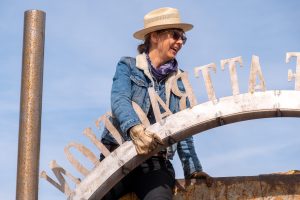
Allison Wiese, University of San Diego
Allison Wiese is an interdisciplinary artist who makes sculptures, installations, sound works, performances, and architectural interventions. Her work is often created for public spaces at the boundaries of or outside institutions, and has been exhibited at, among other venues, Machine Project, Los Angeles, the Museum of Contemporary Art, San Diego and Socrates Sculpture Park, New York. She is the recipient of a Louis Comfort Tiffany Award and has received grants from Art Matters, Creative Capital, the Cultural Arts Council of Houston, and the City of San Diego’s Commission for Arts and Culture. A fellow of MacDowell and an alumna of the Skowhegan School of Painting and Sculpture, Wiese was a Core Fellow of the Museum of Fine Arts, Houston, received her MFA from the University of California, San Diego, and a BA from Brown University. Wiese is an Associate Professor at the University of San Diego.
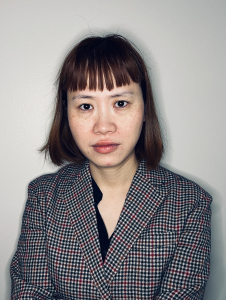
Ziui Vance, Temple University
Ziui explores the semiotics of bodies, their chaotic signals, and spatiality. She makes the paintings, objects, and installations inside the disputed realm between affection and dominance, rules and reality. Characterized by a play-like process, Ziui describes a variety of body configurations with an intricate intensity that reflected on gender, ethnicity, and perceptions: an infinite tapestry of imagery associated with her exoneration from the polar complexities of being Chinese in the United States.
ABOUT THE FELLOWSHIP
The Michael Aurbach Fellowship for Excellence in Visual Art recognizes and honors CAA members who have obtained an MFA or equivalent in studio art and are currently teaching studio classes full-time or part-time. The purpose is to support these artist members as they fulfill their goals as visual arts professionals. On an annual basis, CAA will grant a $7,500 award and registration to the CAA Annual Conference to a qualified artist member teaching at an American or international university or community college. A jury of artists will adjudicate the fellowship and a proposal will not be required; the recipient will be selected solely based on their work. Learn more.
Meet the 2022 Professional Development Fellows
posted by CAA — Feb 07, 2023
CAA is pleased to announce the recipient of the 2022 Professional Development Fellowships. The recipient of the $10,000 fellowship in art history is Mechella Yezernitskaya, Bryn Mawr College, and the recipient of the $10,000 fellowship in visual art is Boone Nguyen, California State University, Los Angeles.
The honorable mentions in art history were awarded to Jack Crawford, City University of New York, and Astrid Tvetenstrand, Boston University. The honorable mentions in visual art are awarded to Jenna Carlie, California Institute of the Arts, and Alberto Lozano Ruvalcaba, Mendocino College.
2022 PROFESSIONAL DEVELOPMENT FELLOWSHIP IN ART HISTORY
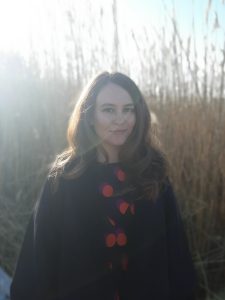
Mechella Yezernitskaya, Bryn Mawr College
Mechella Yezernitskaya is a Ukrainian American art historian, writer, and curator. She is a doctoral candidate in the Department of History of Art at Bryn Mawr College where she specializes in modern and contemporary art. Mechella received her M.A. from Bryn Mawr College and B.A. with honors in Art History from Fordham University. Her dissertation examines representations of temporal rupturing in the wartime visual, literary, and film culture of the avant-gardes of the late Russian Empire and the early Soviet Union. She examines war-related imagery in the work of artists of Belarusian, Russian, and Ukrainian origin across media including illustrated books, poetry, collage painting, performance, and film. By drawing upon theories from trauma and disability studies, Mechella explores the roles of the civilian and combatant, the temporal boundaries of wartime and peacetime, the consequences of imperialism, the rise of nationalism, and the affective experiences of war.
Her work has been supported by grants and fellowships from the American Association of University Women, the Association of Slavic, East European, and Eurasian Studies (ASEEES), the Pittsburgh Foundation, the Malevich Society, the New York Public Library, and the Graduate School of Arts and Sciences of Bryn Mawr College. She has published in ARTMargins Online, Baltic Worlds, post: notes on art in a global context, Slavic & East European Information Resources, and in the edited volume Artistic Expressions and the Great War, A Hundred Years On (Peter Lang Publishing, 2020). She has presented her research at Södertörn University, Stockholm; Karazin University, Kharkiv; Hofstra University, New York; Temple University, Philadelphia; The Museum of Russian Art, Minneapolis; and ASEEES. She has also held guest curatorial positions and fellowships at The Museum of Modern Art, the Philadelphia Museum of Art, the Pennsylvania Academy of the Fine Arts, and the Brooklyn Museum.
HONORABLE MENTIONS IN ART HISTORY
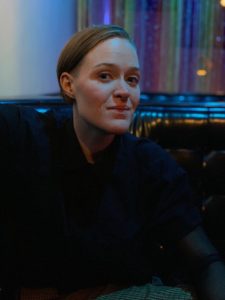
Jack Crawford, City University of New York
Jack Crawford is a teaching artist and art historian. She is currently a Lecturer at Vanderbilt University and University of Tennessee, Knoxville and has previously taught at the New York City College of Technology. She holds a BA from Barnard College and is currently completing her PhD in Art History at the CUNY Graduate Center. Her research, for which she received a 2021–2022 ACLS/Luce Dissertation Fellowship in American Art and a dissertation award from the CUNY Committee on Globalization and Social Change, focuses on appropriation and aesthetics of abundance in queer performance in the postwar period.
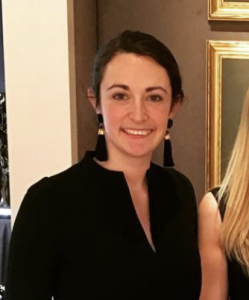
Astrid Tvetenstrand, Boston University
Astrid studies the history of American painting, decorative arts, and architecture. She explores these fields through practices of collection, economic development, and the consumption of American property. Her dissertation traces the connections between American art patronage, second homeownership, and landscape painting at the end of the nineteenth century. She argues that the process of collecting art and land was an effort made by affluent Americans to “buy a view.” By recognizing landscape paintings as investments and monetary goods, Astrid sheds new light on Gilded Age consumerism, aesthetics, and taste. She also localizes art market exchanges within a larger conversation about the privatization of public space.
Astrid’s work is encouraged by positions and fellowships held at the New York Public Library, Museum of Fine Arts, Boston, Massachusetts Historical Society, Nichols House Museum, Bundy Museum of History and Art, Peabody Essex Museum, deCordova Sculpture Park and Museum, Decorative Arts Trust, and Winter Antiques Show.
2022 PROFESSIONAL DEVELOPMENT FELLOWSHIP IN VISUAL ARTS
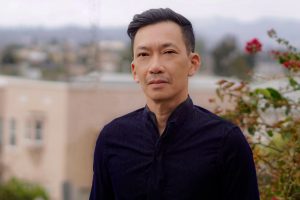
Boone Nguyen, California State University, Los Angeles
Boone Nguyen is an artist of the Southeast Asian diaspora. When he was a child, his family left Saigon and resettled as refugees in South Philadelphia. His experience as a refugee in the metropole informs his work through the themes of displacement and place-building, landscape and historical memory, leaving and returning, loss and transformation. His immersive moving image installations are thus fueled by a continuing search for a distant yet familiar homeplace, where the intimacies of life and death and the dialectic of subjection and resistance serve as a living archive of critical memory that is both personal and collective. He has exhibited his work in Philadelphia, Honolulu, Minneapolis, Los Angeles, and Tokyo.
Boone Nguyen has served in curatorial and management positions in community arts organizations, including Asian Arts Initiative, Frameline, and Scribe Video Center. He holds a BA in American Studies (minor in Asian American Studies) from Yale University. As a Cota-Robles Fellow, he earned an MA in Ethnic Studies at the University of California, San Diego. He was a recipient of a 2018/19 MCAD–Jerome Foundation Fellowships for Early Career Artists, administered by the Minneapolis College of Art and Design and funded by the Jerome Foundation. Nguyen is currently in his final semester of the MFA program at California State University, Los Angeles where he also lectures in the Asian and Asian American Studies Department.
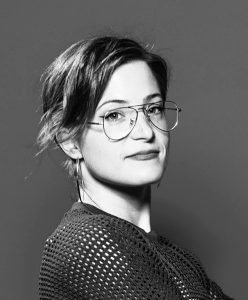
Jenna Carlie, California Institute of the Arts
Jenna studied photography at Speos Institute of Photography in Paris, France and went on to study at Rhode Island School of Design. During the time at RISD, Jenna worked under Annie Leibovitz, Mark Katzman, and Dusty Kessler. In 2016, Jenna graduated with a BFA in photography from Rhode Island School of Design. Jenna moved to Los Angeles and in 2017 worked for Lauren Greenfield, in 2018 worked for Alexa Meade, and by the end of 2018 Jenna Carlie Photography and Design was opened for business. Between 2018 and 2020 Jenna worked on various photographic series for different private collections in the Midwest. In 2020, the Saint Louis Art Museum hired Jenna as their travel contract photographer and later as their in-house photographer, where Jenna is still employed. Jenna is currently getting an MFA from California Institute of the Arts and is expected to graduate in 2024.
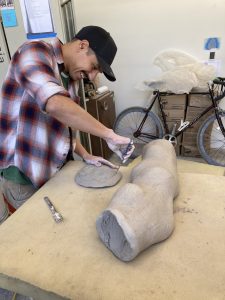
Alberto Lozano Ruvalcaba, Mendocino College
I was born in Tijuana, Baja California in 1993. My family lived in Rosarito next to the beach on a street called Niño Artillero (artillery child). My school was named after Emiliano Zapata, a leader of the Mexican revolution. My parents moved us to the USA when I was eight years old. We left everything behind except for each other and the memories that persist of our home and of the natural landscape around it. They brought us to this country for my siblings and I to have a better future than what was available back home. Thanks to my parents and siblings and my own perseverance, I am now the first person in my family to pursue a master’s degree from a university. I am now a permanent resident of the USA and a candidate for an MFA degree.
ABOUT THE PROFESSIONAL DEVELOPMENT FELLOWSHIP
CAA’s Professional Development Fellowship program supports promising artists and art historians who are enrolled in MFA and PhD programs nationwide. Awards are intended to help them with various aspects of their work, whether for job-search expenses or purchasing materials for the studio. CAA believes a grant of this kind, without contingencies, can best facilitate the transition between graduate studies and professional careers. The program is open to all eligible graduate students in the visual arts and art history. Learn more.
CAA 2023 Awards for Distinction
posted by CAA — Feb 06, 2023
CAA announces the 2023 recipients of Awards for Distinction. By honoring outstanding member achievements, CAA reaffirms its mission to encourage the highest standards of scholarship, practice, connoisseurship, and teaching in the arts. With these annual awards, CAA seeks to honor individual artists, art historians, authors, museum professionals, and critics whose accomplishments transcend their individual disciplines and contribute to the profession as a whole and to the world at large.
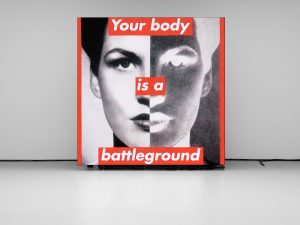
Installation view, Barbara Kruger, David Zwirner, New York, June 30–August 12, 2022. Courtesy David Zwirner.
Among the awards, the Distinguished Artist Award for Lifetime Achievement is presented to Barbara Kruger whose influential works have consistently had viewers question the larger society around them for over four decades.
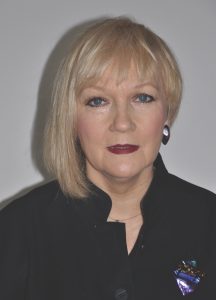
Griselda Pollock
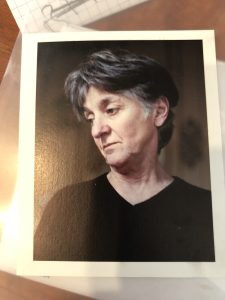
Svetlana Alpers
The Distinguished Lifetime Achievement Awards for Writing on Art are being presented to feminist art historian Griselda Pollock and art historian of northern Renaissance and Dutch Golden Age art Svetlana Alpers.
Art Journal Award
Alfred H. Barr Jr. Award
Julia Burtenshaw, Héctor García Botero, Diana Magaloni, and María Alicia Uribe Villegas, The Portable Universe / El universo en tus manos: Thought and Splendor of Indigenous Colombia (DelMonico Books/Los Angeles County Museum of Art, 2022)
Alfred H. Barr Jr. Award for Smaller Museums, Libraries, Collections, and Exhibitions
No recipient this year
Frank Jewett Mather Award
Eduardo Cadava
Charles Rufus Morey Book Award
Sylvia Houghteling, The Art of Cloth in Mughal India (Princeton University Press, 2022)
Arthur Kingsley Porter Prize
Tomasz Grusiecki, “Doublethink: Polish Carpets in Transcultural Contexts” and Hugo Shakeshaft, “Beauty, Gods, and Early Greek Art: The Dedications of Mantiklos and Nikandre Revisited”
Artist Award for a Distinguished Body of Work
Dawoud Bey
CAA/AIC Award for Distinction in Scholarship and Conservation
Michele Marincola and Lucretia Kargère
Distinguished Artist Award for Lifetime Achievement
Barbara Kruger
Distinguished Lifetime Achievement Award for Writing on Art
Svetlana Alpers and Griselda Pollock
Distinguished Teaching of Art Award
Mary Lum
Distinguished Teaching of Art History Award
No recipient this year
Excellence in Diversity Award
Arlene M. Dávila
Citations:
Art Journal Award
Emilie Boone, “When Images in Haiti Fail: The Photograph of Charlemagne Péralte,” Art Journal, Winter 2022
The 2022 jury has chosen Emilie Boone as the recipient of the 2022 Art Journal Award for the essay, “When Images in Haiti Fail: The Photograph of Charlemagne Péralte.” Boone’s deconstruction of a single photo offers readers an entry into the contested history surrounding the US occupation of Haiti, as well as the attendant visual politics of this period (1915–34). Through close textual analysis of Péralte’s historically significant image, the author weaves together a situated narrative of Haitian visual culture under occupation, interrogating crucial notions of ontology through examination of photographic composition. Boone frames the racialized body as a contested and imagined site rife for adaptation and tampering, first through vernacular photographic techniques, as well as other forms of pictorial representation. In the end, Boone’s text summons an interrogation of tradition, and indeed, of the implicit politics of the medium of photography itself.
Jury members:
Omar Kholeif, Sharjah Art Foundation, Chair
Phil Taylor, George Eastman Museum
Tilo Reifenstein, York St John University
Alfred H. Barr Jr. Award
Julia Burtenshaw, Héctor García Botero, Diana Magaloni, and María Alicia Uribe Villegas, The Portable Universe/El universo en tus manos: Thought and Splendor of Indigenous Colombia (DelMonico Books / Los Angeles County Museum of Art, 2022)
The Western concept of El Dorado has long impacted the study of the ancient cultures of Colombia, overshadowing the manifold stories that pre-Columbian art weaves across time and space. How can museum curators uncover those stories, illuminate their nuanced complexities, and present them to the public in engaging and innovative ways? The Portable Universe/El universo en tus manos is the remarkable outcome of just such an undertaking. Both the catalog and related exhibition are the result of a six-year collaboration between the Los Angeles County Museum of Art and Museo del Oro, Bogotá. Most importantly, the curators collaborated with a contemporary Indigenous community in Colombia, the Arhuaco of the Sierra Nevada de Santa Marta. The Portable Universe reveals that pre-Columbian artifacts—including goldworks, ceramics, and textiles—are not mere objects, but rather messengers that link living beings (people, animals, plants) and places across space and time. Each is, in brief, a portable universe. The Arhuaco explain that these messengers need to be “nourished,” or brought back to life. Thus, the concept of nourishment enters curatorial practice: a form of sustained, reciprocal attention that goes well beyond customary models of stewardship. Incisively written, gorgeously illustrated, and ingeniously designed, this groundbreaking book brings together interdisciplinary research (in history, archaeology, anthropology, environmental studies, and ornithology) and Indigenous knowledge to propose a new approach to the material and spiritual culture of ancient Colombia, one which underscores the transformative powers of cross-cultural dialogue. A major advance in the study of Indigenous art, the book spurs us to creatively rethink our notions of both the museum and scholarship.
Jury Members:
Benjamin Anderson, Cornell University, Co-chair
Karen Lang, Independent Scholar, Co-chair
Francesca Pietropaolo, Independent Scholar
Jochen Wierich, Aquinas College
Frank Jewett Mather Award
Eduardo Cadava
The jury has awarded this year’s prize to Eduardo Cadava, based on his elegant book Paper Graveyards (MIT Press, 2021) and in recognition of his long career within the field of art criticism, especially his influential theories of photography. Paper Graveyards is the culmination of decades of Cadava’s thinking about how images and technical media actively transform social and political life, and his far-ranging case studies (including examinations of artists Leon Golub, Nancy Spero, Fazal Sheikh, and Susan Meiselas) orient themselves towards activist practices that speak to and from the margins. Wending through ruminations on materiality, forms of documentary, and modes of circulation, Cadava writes a new account of what it means to pay visual witness in the face of constant emergency.
Jury members:
Julia Bryan-Wilson, Columbia University, Chair
Nicole Fleetwood, New York University
Kim Theriault, Dominion University
Charles Rufus Morey Book Award
Sylvia Houghteling, The Art of Cloth in Mughal India (Princeton University Press, 2022)
The Art of Cloth in Mughal India by Sylvia Houghteling focuses on the production, circulation, and consumption of South Asian textiles in the sixteenth and seventeenth centuries, a period of both global manufacturing dominance and intense artistic creativity for Indian cloth-makers. The book offers a uniquely comprehensive account of the complex meanings of cloth as it moved across the Mughal imperial courts, the kingdoms of Rajasthan, the Deccan sultanates, and the British Isles, all the while remaining attentive to the richness of regional specialties. Houghteling brilliantly weaves together a capacious range of topics including issues of patronage and labor, iconography and symbolism, technical and ecological considerations, connections with poetry and other fine as well as decorative arts, and the sensory experience of the various textiles, from gauzy muslins to tent panels. Starting with an account of the Emperor Akbar’s patronage of dyers and weavers, Houghteling analyzes the elaborate Bikaner Robe, which Akbar’s successor Jahangir presented to a provincial raja. She moves on to the elegant textile culture of the Rajput Court of Amber and the kalamkari cloth of Machilipatnam, ending with a survey of the flourishing market for Hindustani cloth in early modern Britain, evidence of a new global cosmopolitanism that linked the Mughal court with the Stuarts. The book’s handsome design, color illustrations, and vivid writing make Art of Cloth an engaging read for scholars and general readers alike.
Jury members:
Lisa Schrenk, University of Arizona, Chair
John Cunnally, Iowa State University
Laura Anne Kalba, University of Minnesota, Minneapolis
J. P. Park, University of Oxford
Andrew Wasserman, American University
Arthur Kingsley Porter Prize
Tomasz Grusiecki and Hugo Shakeshaft
Tomasz Grusiecki, “Doublethink: Polish Carpets in Transcultural Contexts,” The Art Bulletin, September 2022
That art objects move, and that in doing so their meaning changes, is now widely accepted, but conceptualizing and describing the ways in which such changes occur still often eludes us. Tomasz Grusiecki’s winning essay provides a framework for doing just that, in its elegant examination of the lives and plural significances of carpets in early modern Eastern and Central Europe. Borrowing George Orwell’s notion of “doublethink,” Grusiecki shows, with a keenly historical eye, that there was little tension for early modern patrons between the provenience of carpets in Safavid Persia or Ottoman Turkey and their adaptation into local European contexts, where they became fundamental to the construction of individual and burgeoning national identities. Grusiecki moves past the simple charting of the “surprising” provenances of individual objects to weave a complex web in which he embraces the inevitable messiness of movement—and of meaning—in early modernity. Grusiecki’s transcultural doublethink promises to be a concept of great utility for our discipline as it continues to grapple with these issues.
Hugo Shakeshaft, “Beauty, Gods, and Early Greek Art: The Dedications of Mantiklos and Nikandre Revisited,” The Art Bulletin, May 2022
In his groundbreaking article “Beauty, Gods, and Early Greek Art: The Dedications of Mantiklos and Nikandre Revisited,” Hugo Shakeshaft transforms narratives around the topic of beauty in the religious art of archaic Greece. He moves away from such still-influential Enlightenment frameworks as Kant’s account of aesthetic autonomy and Winckelmann’s concern with timeless aesthetic values to examine the question of beauty from a historicizing vantage point. In order to assess how beauty mattered for those who patronized, created, employed, and observed artworks in ancient Greece, Shakeshaft focuses on two anthropomorphic votive figurines—a bronze statuette dedicated by Mantiklos (ca. 700–675 BCE) and a marble life-size statue dedicated by Nikandre (ca. 660–630 BCE). In his deeply researched discussion, he reconsiders these celebrated objects through a layered analysis of their forms, inscriptions, and materials as well as by reading them alongside aesthetic values expressed in the writings of Homer and Hesiod. In particular, he calls attention to the ideal of charis, a rich concept that can be translated as “beauty,” “favor,” “gratitude,” and “grace,” to show how beauty was inextricably tied to ideas of reciprocity. Ultimately, Shakeshaft posits that beauty needs to be treated as rigorously as any other interpretive category, and—far from being a universal—demands contextualized cultural awareness.
Jury members:
Adam Jasienski, Southern Methodist University, Chair
Susanna Berger, University of Southern California
Christine I. Ho, University of Massachusetts Amherst
Artist Award for a Distinguished Body of Work
Dawoud Bey
Dawoud Bey has a photographic career spanning four decades, beginning in 1975 with the seminal five-year portrait project of everyday life in Harlem. His work has recently traveled in a retrospective titled An American Project” at the San Francisco Museum of Modern Art and co-organized by the Whitney Museum of American Art. In his recent publication, Dawoud Bey: Two American Projects, his work explores race, African American history and underrepresented communities; featuring portraits memorializing the six children who were victims of the Ku Klux Klan’s bombing at 16th Street Baptist Church in Birmingham, and a group of black-and-white landscapes made in Ohio where the Underground Railroad once operated. In the 1980s Bey collaborated with artist David Hammons by documenting the performances Bliz-aard Ball Sale and Pissed Off. In 2017 he received the MacArthur Fellowship and is Professor of Photography at Columbia College Chicago where he has taught for over twenty years. Bey’s work is in permanent collections of leading museums, including the Art Institute of Chicago, the Museum of Modern Art in New York, and the Whitney Museum of American Art.
Jury members:
Derek G. Larson, Purdue University, Chair
Stephen Fakiyesi, Independent Artist
Jessica Hong, Art Museum
CAA/AIC Award for Distinction in Scholarship and Conservation
Michele Marincola and Lucretia Kargère
Michele Marincola and Lucretia Kargère are recognized by conservators, curators, and art historians, for their contributions to the study of European sculpture. Their recent, joint publication titled The Conservation of Medieval Polychrome Wood Sculpture: History, Theory, Practice (Los Angeles: Getty Conservation Institute, 2020) is a major contribution to the fields and represents two-decades of collaborative work.
Marincola is the Sherman Fairchild Chair, and Sherman Fairchild Distinguished Professor of Conservation, at the Conservation Center, Institute of Fine Arts, New York University, a position she has held since 2014. Kargère is a Conservator of Medieval Sculptures at the Metropolitan Museum of Art and the Cloisters. Marincola previously worked with Kargère at the Cloisters where they collaborated on conservation and research. Marincola’s contributions to scholarship include research on the sculptor Tilman Riemenschneider and the translation and commentary of Johannes Taubert’s Farbige Skulpturen into English. Kargère, who is known for her work on French sculpture, has collaborated with Maricola and conservation scientists at the Metropolitan Museum of Art on the publications about the materials and techniques used in Medieval polychrome sculpture.
Both Marincola and Kargère are recognized for having educated students and colleagues about the history and conservation of European Medieval polychrome sculpture. Numerous students, interns, and Fellows have benefitted from their expertise both at the Metropolitan Museum of Art and at New York University. Moreover, Marincola and Kargère are known for producing publications and presentations that touch upon important issues in art conservation, art making, art history, and ethics.
Jury members:
Tiarna Doherty, University of Delaware and Smithsonian, Chair
Fernanda Valverde, Amon Carter Museum
Rebecca Rushfield, Rebeccah Rushfield Arts Consultants
Distinguished Artist Award for Lifetime Achievement
Barbara Kruger
Barbara Kruger’s distinct artistic practice has palpably shaped the broader social, cultural, and visual fields for decades. For over four decades, the artist has persistently expanded her practice, exploring new media, from video to large-scale installations, collaborating with popular brands (with some even co-opting her iconic visual language) extending her influence beyond the art world, to pursuing intrepid interventions in the public sphere. Best known for her works with bold, declarative, often imposing and seemingly authorless text in which she overlays appropriated black-and-white imagery, Kruger interrogates mass media and consumer culture’s effects on how we see and understand ourselves. As the artist expressed, “I work with pictures and words because they have the ability to determine who we are, what we want to be and what we become,” and she sees her works as prompts “to question and change the systems that contain us.” With the internet boom, explosion of social media, advertising’s increasingly sophisticated, if not untruthful, tactics, and advertising’s constant presence now from an infinite number of sources, Kruger’s work, past and present, feels more relevant than ever (as seen with numerous and recent solo presentations around the globe). Throughout her dedicated practice, Kruger has reminded us that these issues will continue to raise existential concerns and impact society writ-large until actively contended with.
Jury members:
Derek G. Larson, Purdue University, Chair
Stephen Fakiyesi, Independent Artist
Jessica Hong, Art Museum
Distinguished Lifetime Achievement Award for Writing on Art
Svetlana Alpers and Griselda Pollock
Renowned for her groundbreaking work on Dutch Golden Age painting, Svetlana Alpers’ writings have had a profound impact on the field of art history. A founder of the journal Representations and one of the central figures in the revisionist turn of the new art history, Alpers broke with long-standing approaches to northern European art by asking new questions about visual culture and ways of seeing. In The Art of Describing (1983), her questions about optics and image-making devices ignited scholarship in premodern and modern fields alike. In subsequent publications, Alpers’ notions about the monetary value of art materials and the marketing strategies of artists also proved fertile ground for later scholars. However, the Art of Describing did not only reinvent methodologies for understanding Dutch art, pushing against the field’s reliance on ideas forged in the study of Italian artistic practices; it recast what it means to “describe” art, the ekphrastic basis of our field, effecting the writing of art history ever since.
Professor Emerita from the University of California at Berkeley, where she taught from 1962–98, Alpers continues to publish across and redefine fields ranging from the Baroque to contemporary art and photography history. Widely known for Rembrandt’s Enterprise: The Studio and the Market (1988), which won CAA’s Charles Rufus Morey Book Award in 1990, Alpers has also penned field-changing monographs on Tiepolo, Rubens, and Velázquez. To this list, Alpers has added her latest book, Walker Evans: Starting from Scratch (2020), a monograph on one of the most important photographers of the twentieth century, and part of a subset of her writings that have confronted directly the challenges of photography, as The Art of Describing long ago became required reading in this field. Her recent publications such as Roof Life (2013) make concrete the writerly challenge that her work has always issued to art history, the need to reinvent “how” as well as “what” we say and write about art.
Arguably the leading feminist art historian of the generation after Linda Nochlin, Griselda Pollock first made an impact with a vigorous dissembling of the “artists mythologies and media genius” that attended the canonization of artists such as Vincent van Gogh. She went on to devote close attention to previously devalued women artists such as Mary Cassatt, Eva Hesse, and, more recently, in her innovative Virtual Feminist Museum, Charlotte Salomon. Essays such as “Modernity and the Spaces of Femininity” in her 1987 book Vision and Difference were powerful examples of her strategy of “feminist interventions” into the history of art, rather than falling for the trap of settling for the inclusion of women artists within the prevailing patriarchal structures.
The Award acknowledges this groundbreaking work as well as a wider, far-reaching achievement, ranging across several decades. Pollock’s writing has long refused to stay in its art historical place, to belong to a single position or way of working. Her brand of feminist revisionism constantly engages the social history of art, bridges art history with cinema studies, opens onto the fields of psychoanalysis and cultural geography, while also participating in the debates of postcolonial theory and responding to the imperatives of decolonization. While remaining attentive to the demands of each of these critical disciplines, her writing about art remains passionate, profound, open-hearted, and, always, political.
Jury Members:
Terry Smith, University of Pittsburgh, Chair
George Baker, University of California Los Angeles
Gillian Elliott, George Washington University
Distinguished Teaching of Art Award
Mary Lum
Mary Lum is CAA’s 2023 Distinguished Teaching of Art Award recipient. Lum, an accomplished visual artist in her own right, has been a professor of painting and drawing at Bennington College in Vermont since 2005, and prior to that taught at the New York State College of Ceramics at Alfred University. Among her many notable contributions as an educator is her ability to nurture a passion for art making in her students that has taken many of them from foundational studies, to graduate school, and to successful professional practices as artists, art directors, curators, and academic professors.
Steven Frost, Assistant Professor and Faculty Director, University of Colorado Boulder says of his time as a foundation student under Lum; “With her help I began to understand a creative practice needed to be fed by more than time in the studio . . . She took the time to bring me up to speed and prepare me for the professional world.”
Rebekah Modrak, foundation student, current professor University of Michigan, STAMPS School of Art and Design says of Lum “Thank goodness her main concern was the possibility that there might be compelling artists lurking below our early and often tenuous attempt at artmaking.” “When I think of moments in my life that changed my trajectory,” says former student and UK-based art director and curator Christine Serchia, “Mary Lum is responsible for multiple moments.”
CAA is excited to recognize Mary Lum’s more than two decades of teaching with this award.
Jury members:
Derek G. Larson, Purdue University, Chair
Stephen Fakiyesi, Independent Artist
Jessica Hong, Art Museum
Distinguished Feminist Awards
Nalini Malani and Marsha Meskimmon
Nalini Malani’s work has been recognized in solo exhibitions at over thirty international institutions. Her work has embraced painting, video, stop-motion, and other time-based media, while engaging issues of women’s equality in India, where her family took refuge in 1946 after the partition. Malani’s early career in painting gave way to a more focused approach to time-based media in the 1990s, making works such as the 1998 Remembering Toba Tek Singh, a meditation on nuclear testing in India and Pakistan. Focusing on the aftereffects of the devastating partition of India and Pakistan, Malani’s work has been liberal in its use of media types and productions, including the emotive devices of theater.
Malani has turned this unflinching attention to the ways in which the woman’s body has been used as a pawn in games of nationalism and internationalism. Her Mother India: Transitions in the Construction of Pain (2005) combined archival footage and other imagery, a series of juxtapositions that shed new light on the depicted contorted bodies of women. She continues this thread in a 2020 multimedia performance of images projected onto the Taj Mahal Hotel, inspired by the week-long gang rape and murder of an eight-year-old girl. Malani’s work is a beacon; her work is eminently important now as the world bears witness to an increase in femicide and gender-based violence.
Marsha Meskimmon, PhD is a professor of art history who studies, teaches, and writes on global feminisms. Her groundbreaking scholarly work has been matched by a commitment to promoting and mentoring women in the field. Meskimmon is editor for Drawing In, and she is also a consultant editor for Open Arts Journal. She has authored or co-authored twelve books over her career, with a sustained focus on the political stakes of feminism and its ability to shed light on the circulation of art and the discourse of aesthetics. With Amelia Jones, she edits the book series Rethinking Art’s Histories for Manchester University Press, a series that has promoted books that rethink art and its histories, and has used feminist thought in relation to “global” and non-Western approaches to art history. Her work on the exhibition WACK! Art and the Feminist Revolution marked an important return to feminism in the art world, a redefinition of the stakes and of the purview of its ideas. Her essay for the exhibition succeeded in arguing why feminism is global—describing it as a constellation of approaches, places, and times. It models an interdisciplinary and collaborative idea of feminism, not a static theory that spreads from the North Atlantic out to world. Her tireless work on behalf of women in the arts is a model for scholars who do their work out of a stated commitment.
Jury Members:
Delinda Collier, School of the Art Institute of Chicago, Chair
Yvonne Love, Penn State University
Midori Yoshimoto, New Jersey City University
Excellence in Diversity Award
Arlene M. Dávila
Arlene M. Dávila is Professor of Anthropology and American Studies at New York University and founding director of The Latinx Project. Established in 2018, The Latinx Project is an interdisciplinary space focusing on US Latinx Art, Culture and Scholarship. In addition to hosting artists and programs, it functions as a platform fostering critical public programming.
Professor Dávila’s has published extensively on Latinx cultural politics in museums and contemporary art, media, and urban environments to explore the intricacies and ultimate challenges of visualizing Latinx art and culture. Her research spans urban ethnography, the political economy of culture and media, consumption, immigration and geographies of inequality and race.
Professor Dávila’s publications, with a focus on public imagery and cultural politics, include Latinx art: Artists, Markets and Politics (Duke University Press, 2020), El Mall: The Spatial and Class Politics of Shopping Malls in Latin America (University of California Press, 2016), the revised edition of Latinos Inc: Marketing and the Making of a People (University of California Press, 2012), Culture Works: Space, Value, and Mobility Across the Neoliberal Americas (NYU Press, 2012), and Latino Spin: Public Image and the Whitewashing of Race (NYU Press, 2008). Dávila also co-edited the collection Contemporary Latina/o Media: Production, Circulation, Politics (NYU Press, 2014). Her articles have appeared in AZTLAN: A Journal of Chicano Studies and Centro: Journal of the Center for Puerto Rican Studies.
Carmenita Higginbotham, Virginia Commonwealth University, Chair
Anne H. Berry, Cleveland State University
Kelly Walters, Parsons School of Design


